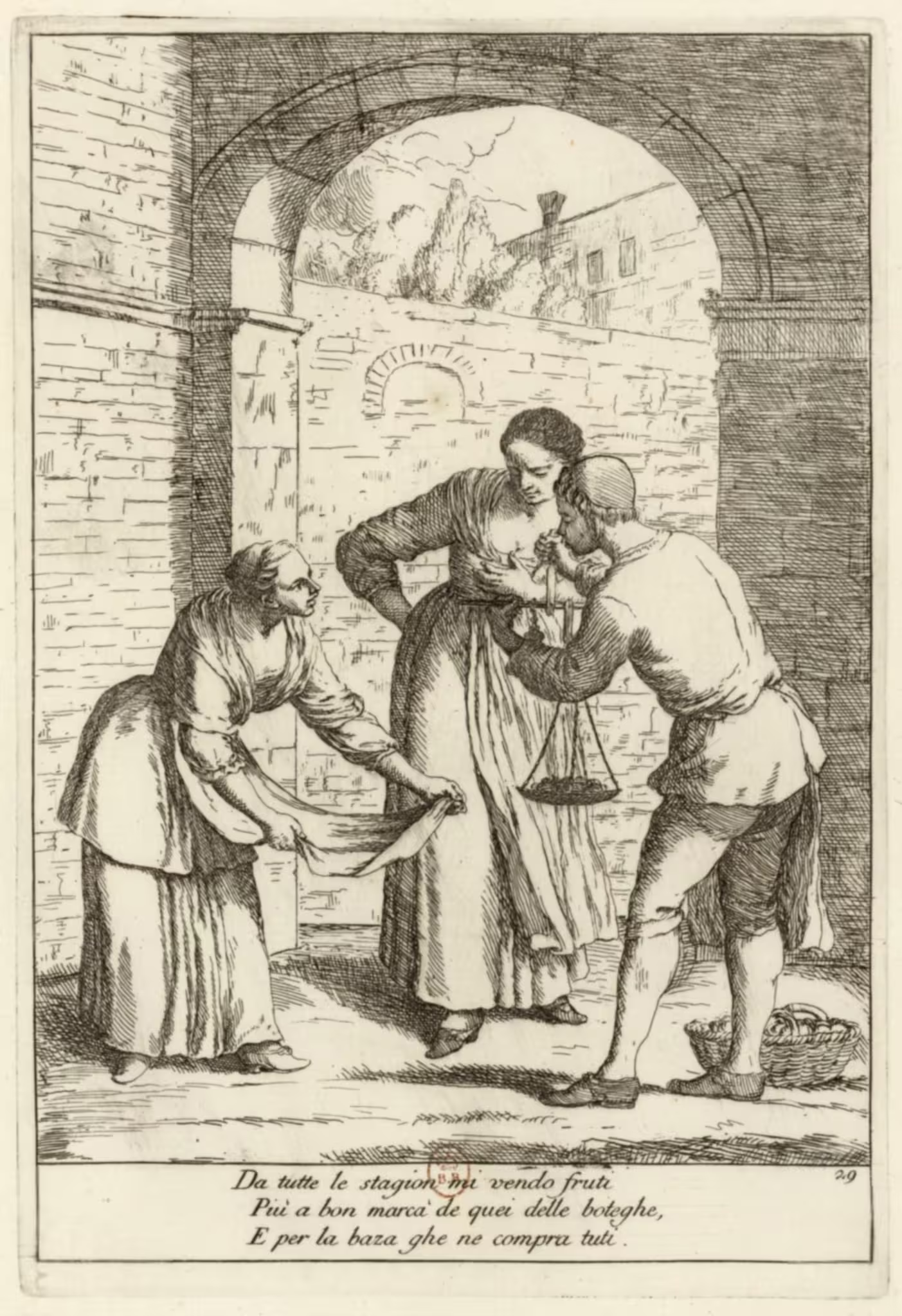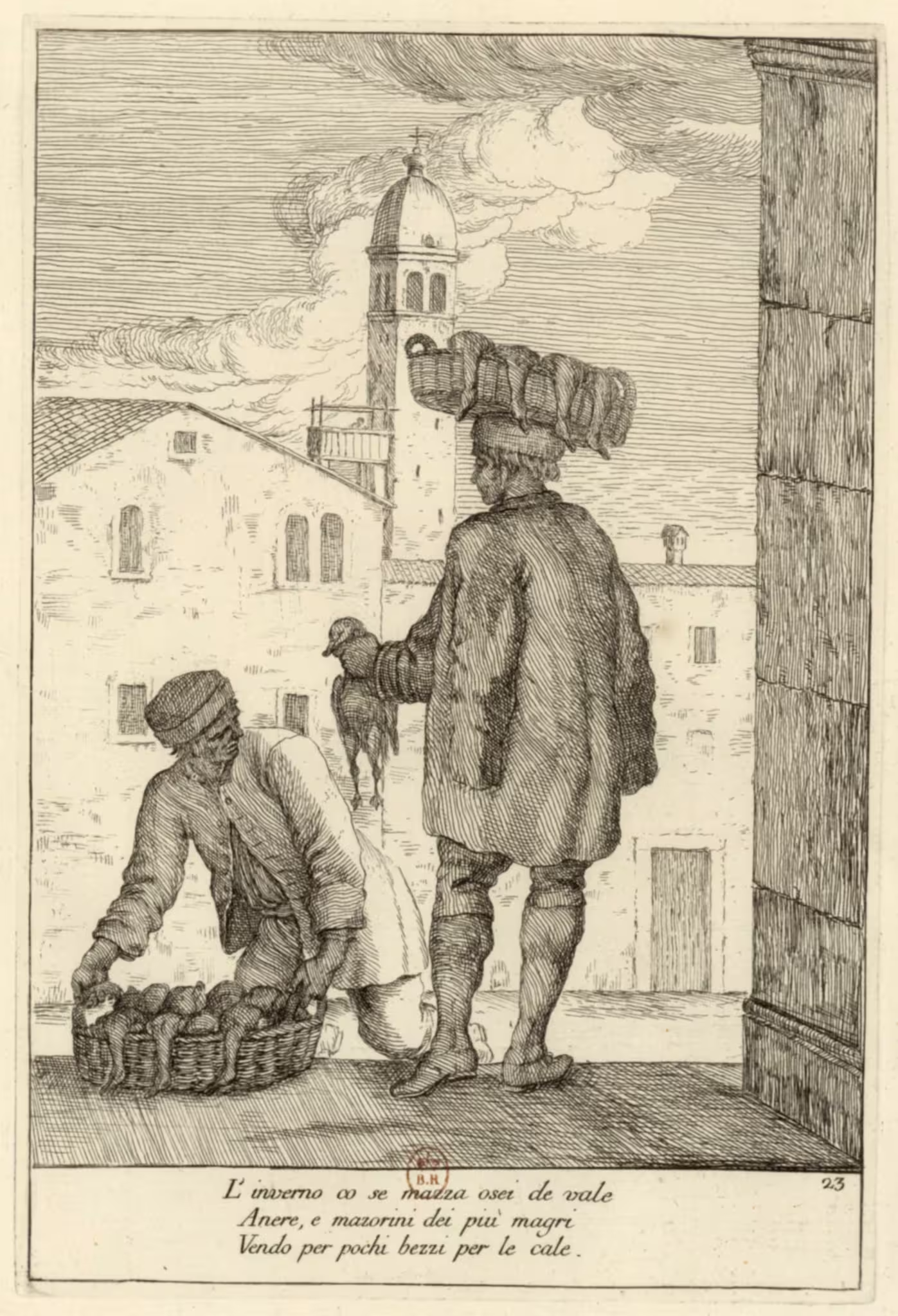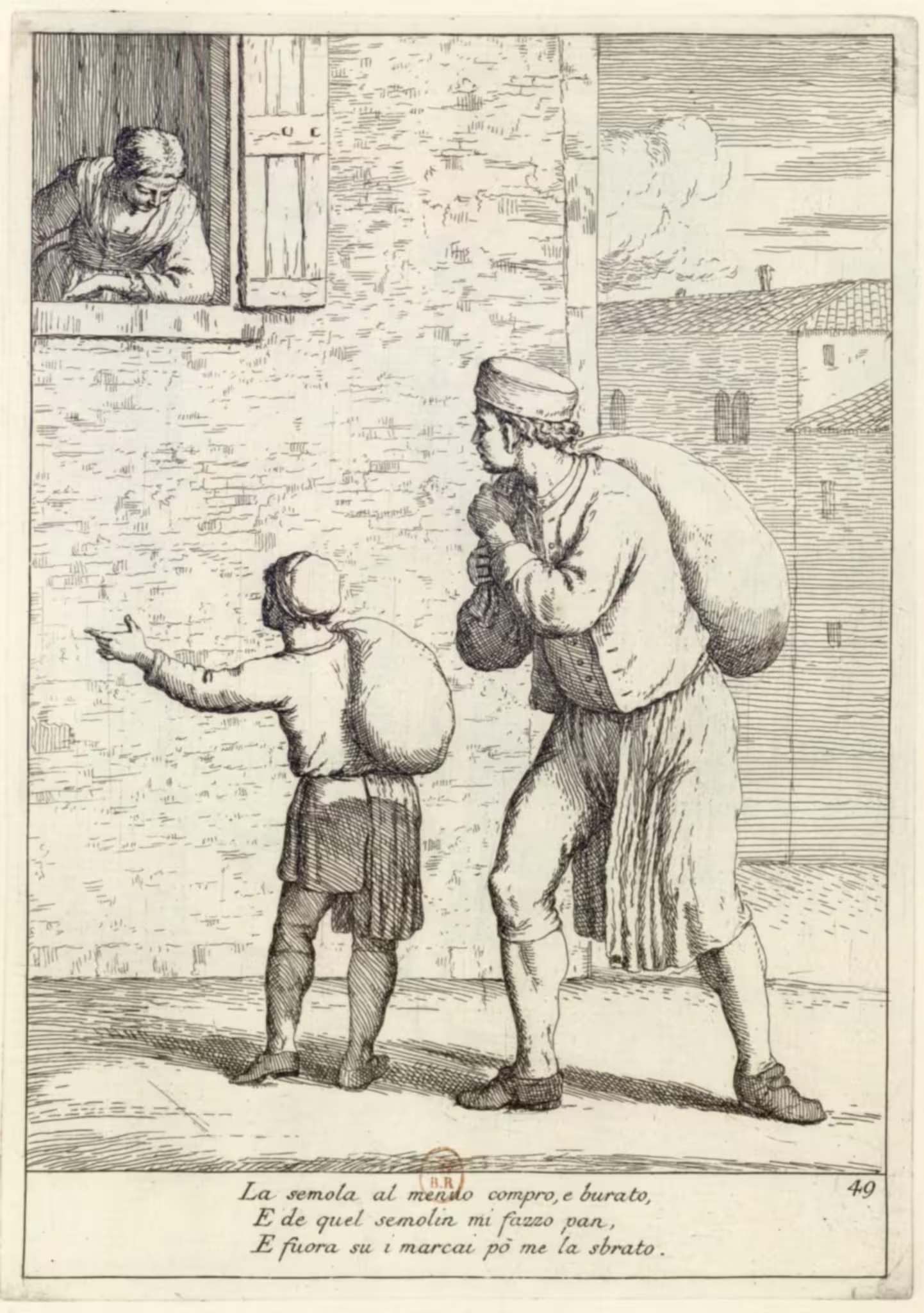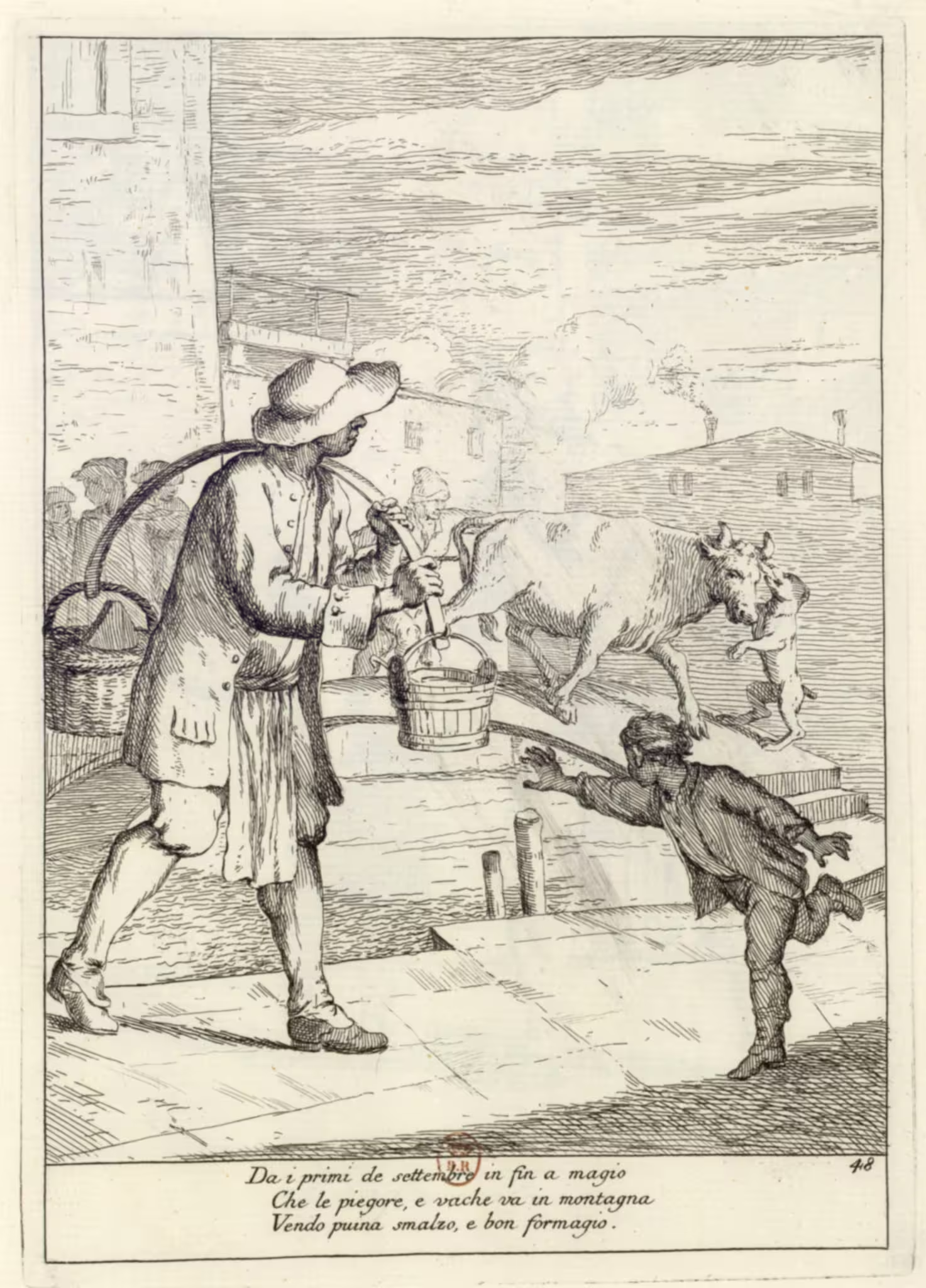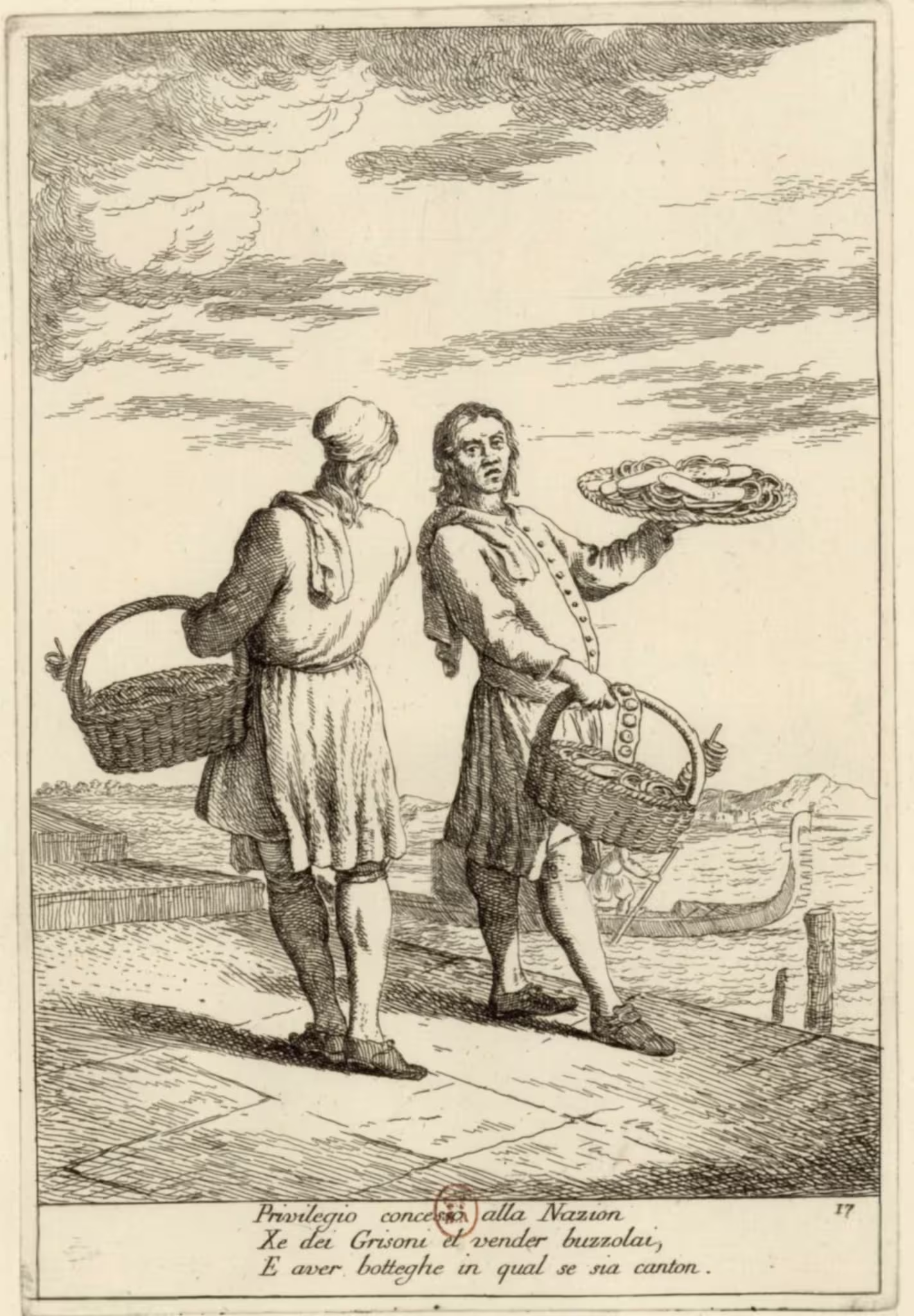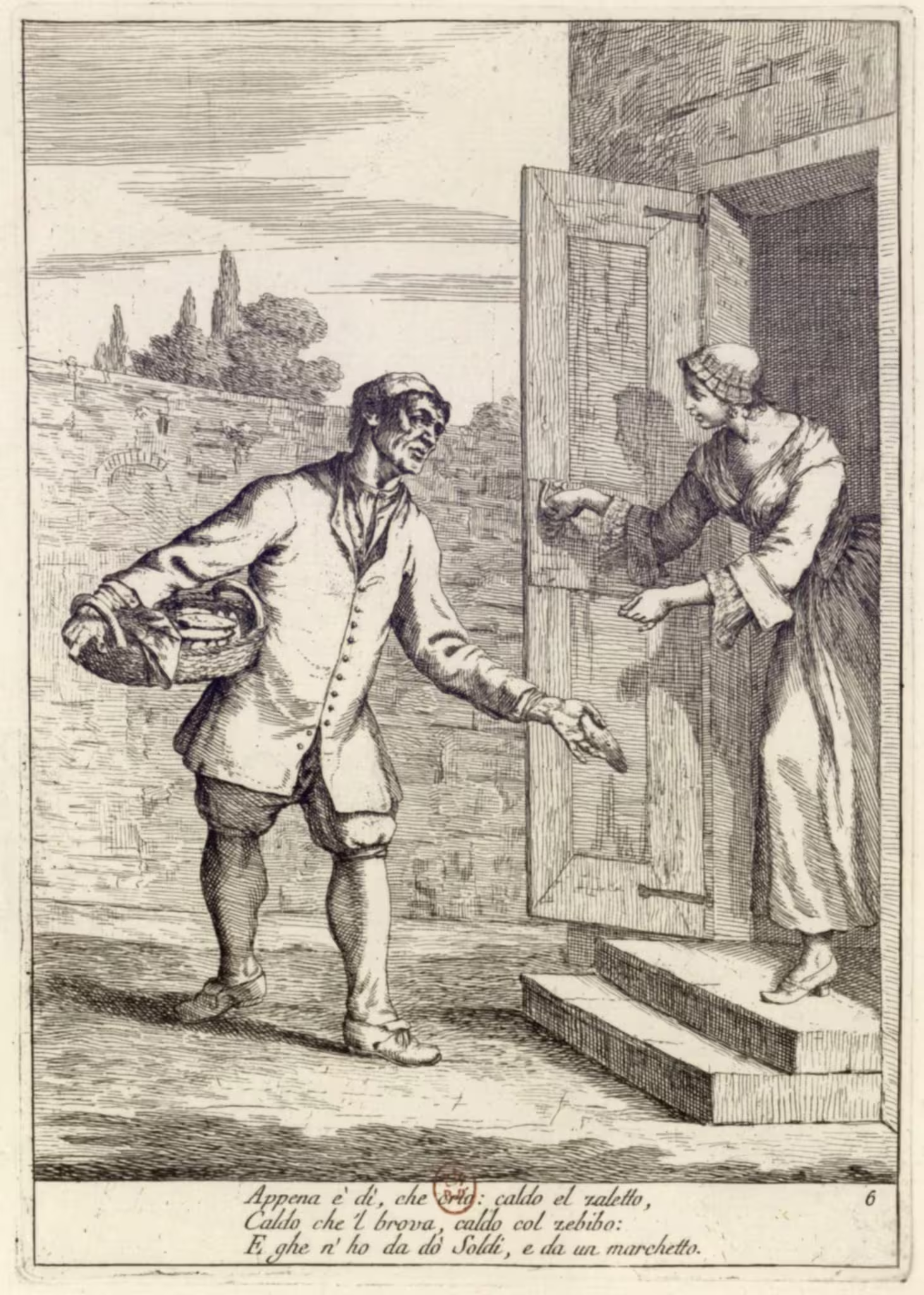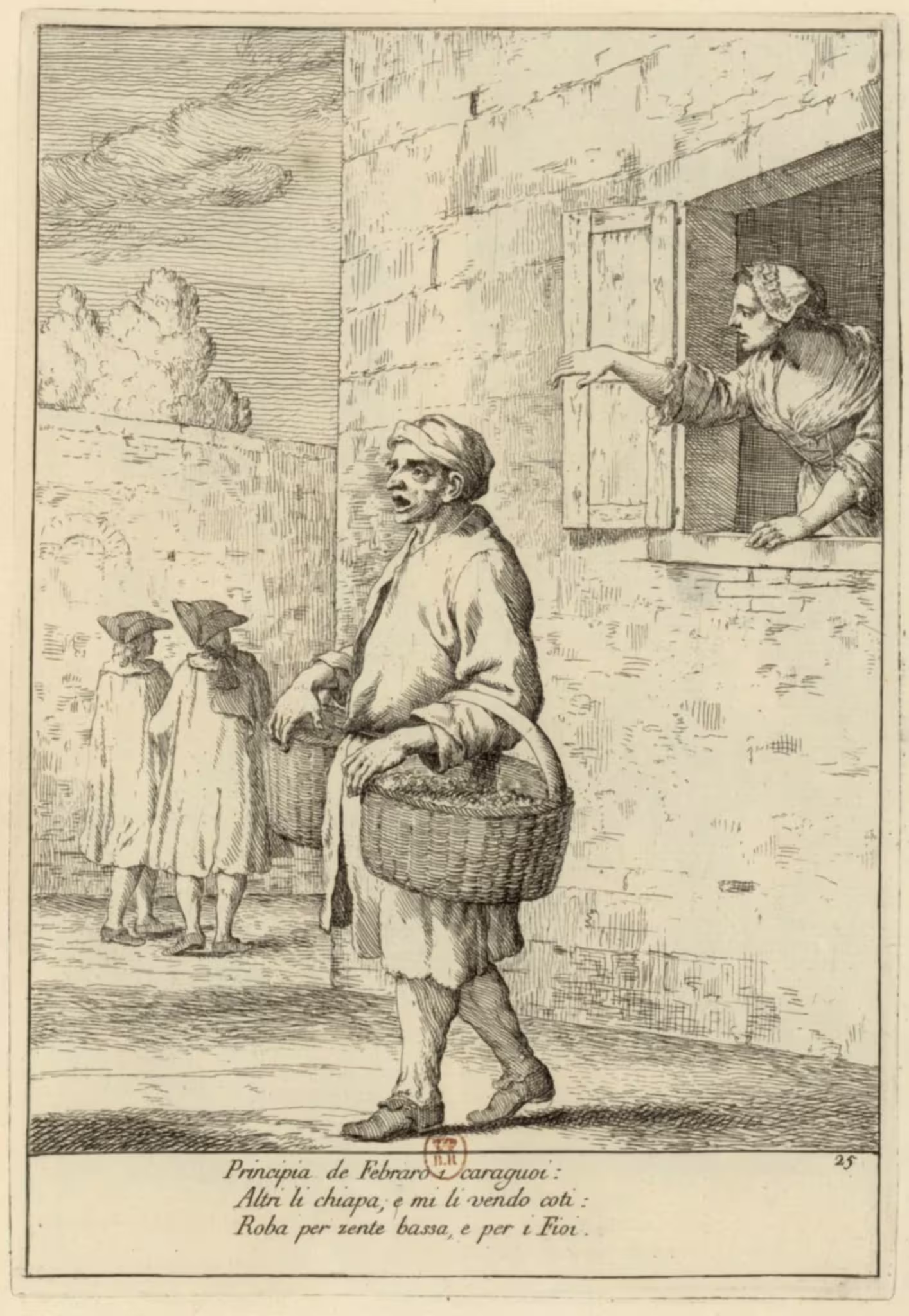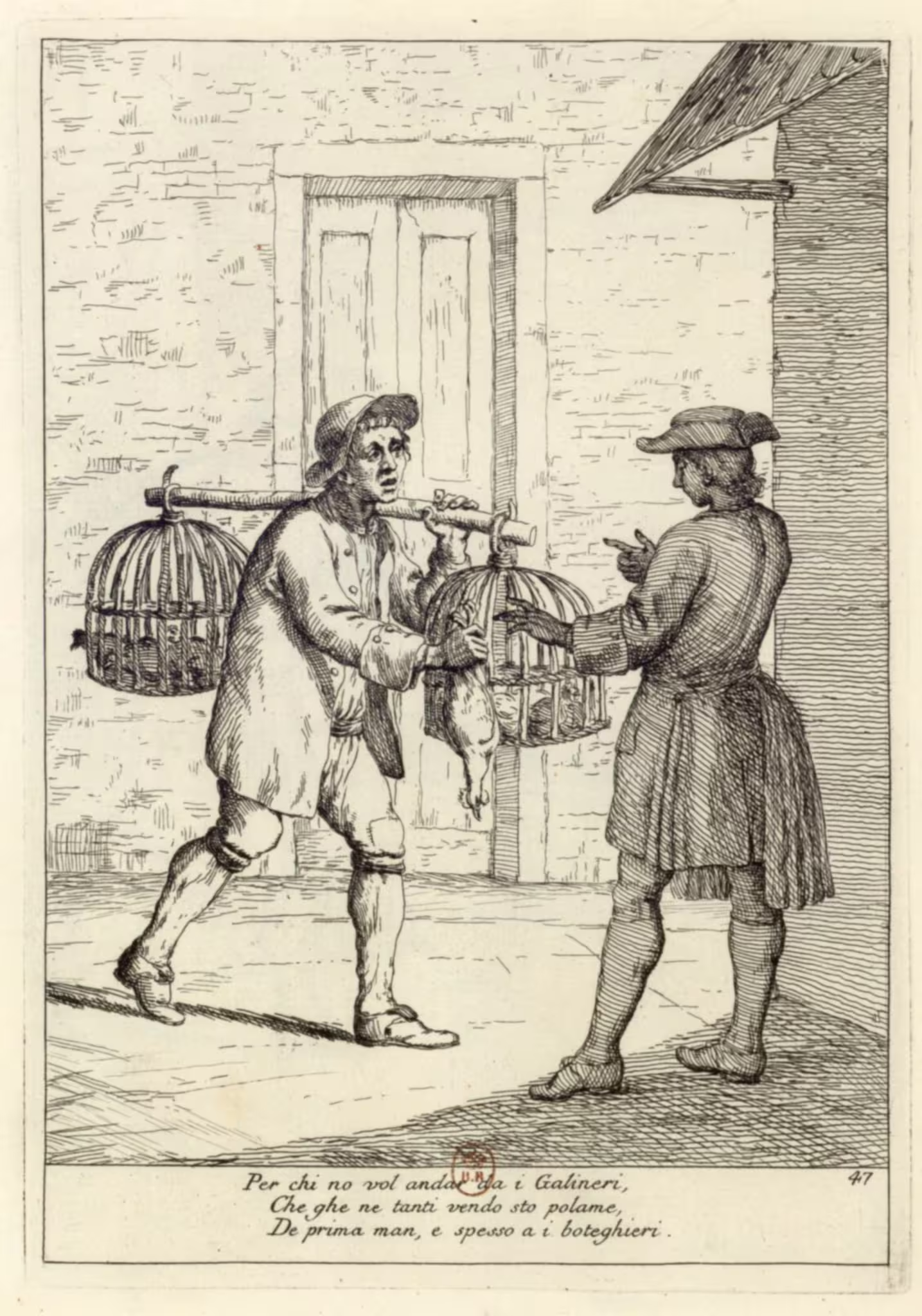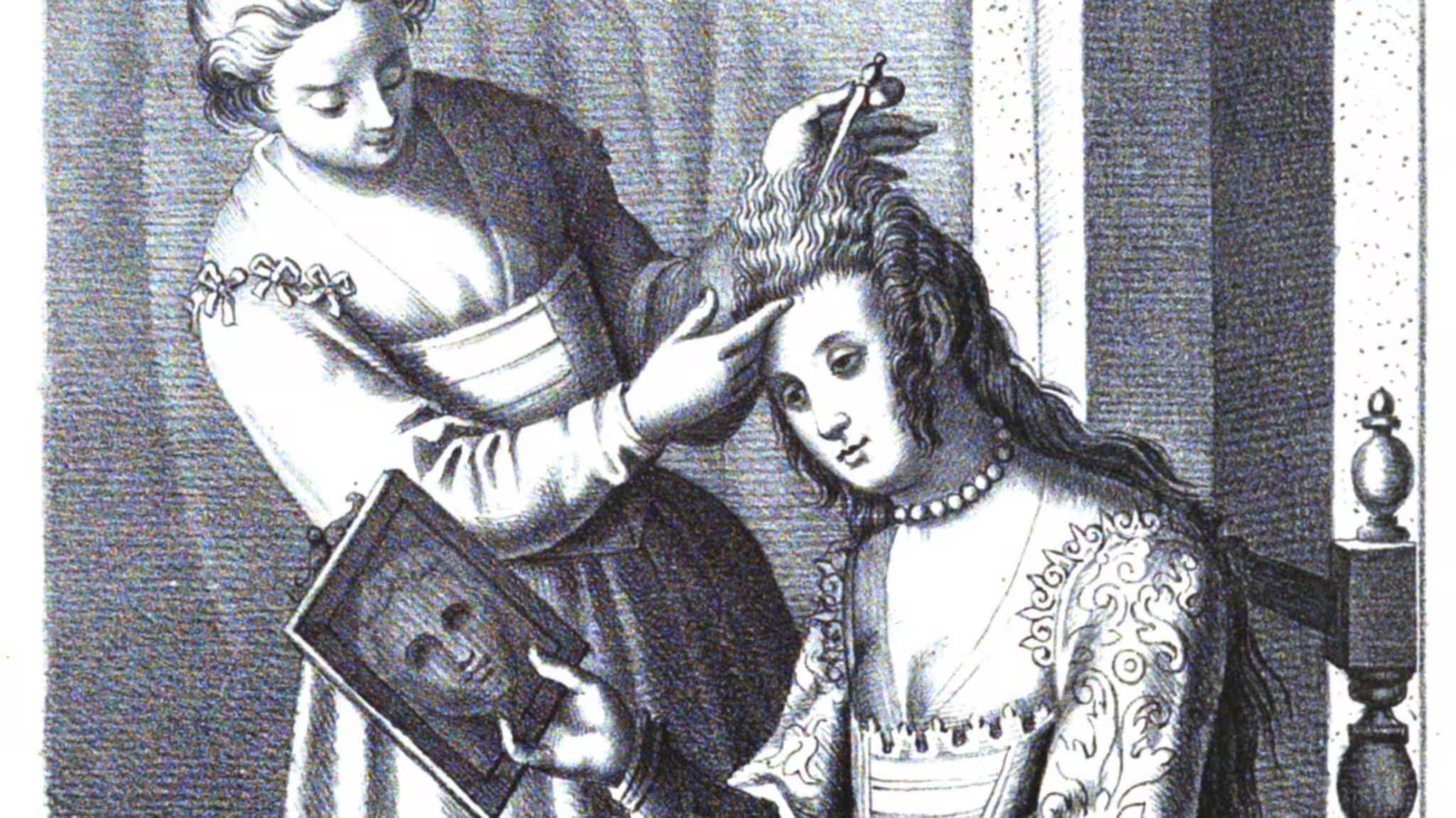Boerio (1829) Dizionario
The Dizionario del Dialetto Veneziano — Dictionary of the Venetian Dialect — by Giuseppe Boerio from 1829 is the essential dictionary of the late Venetian language for anybody trying to read old Venetian texts.
-
Fruttariol — fruit seller — Zompini — Arti #29
“Fruttariol” (fruit seller) from “Arti che vanno per via” (1785) by Gaetano Zompini, translated by René Seindal.
-
Foleghe , e Mazzorini — Coots and ducks — Zompini — Arti #23
“Foleghe , e Mazzorini” (Coots and ducks) from “Arti che vanno per via” (1785) by Gaetano Zompini, translated by René Seindal.
-
Dolce de Vedeletto — street vendor of blood pudding — Zompini — Arti #35
“Dolce de Vedeletto” (street vendor of blood pudding) from “Arti che vanno per via” (1785) by Gaetano Zompini, translated by René Seindal.
-
Dalla Semola — collector of bran to make bread — Zompini — Arti #49
“Dalla Semola” (collector of bran to make bread) from “Arti che vanno per via” (1785) by Gaetano Zompini, translated by René Seindal.
-
Dalle Puine — vendor of ricotta and cheese — Zompini — Arti #48
“Dalle Puine” (vendor of ricotta and cheese) from “Arti che vanno per via” (1785) by Gaetano Zompini, translated by René Seindal.
-
Scaleter — seller of bussolai and ciambelle — Zompini — Arti #17
“Scaleter” (seller of bussolai and ciambelle) from “Arti che vanno per via” (1785) by Gaetano Zompini, translated by René Seindal.
-
Zaletto — seller of sweet maize cakes with butter — Zompini — Arti #6
“Zaletto” (seller of sweet, yellow cakes with butter) from “Arti che vanno per via” (1785) by Gaetano Zompini, translated by René Seindal.
-
Caraguoi — Snail seller — Zompini — Arti #25
“Caraguoi” (Snail seller) from “Arti che vanno per via” (1785) by Gaetano Zompini, translated by René Seindal.
-
Contadin con Polame — farmer selling poultry — Zompini — Arti #47
“Contadin con Polame” (farmer selling poultry) from “Arti che vanno per via” (1785) by Gaetano Zompini, translated by René Seindal.
-
A catalogue of Venetian prostitutes
The “Catalogo di tutte le principal et più honorate Cortigiane di Venetia” is a list of some 212 prostitutes, where they lived, and their prices.

